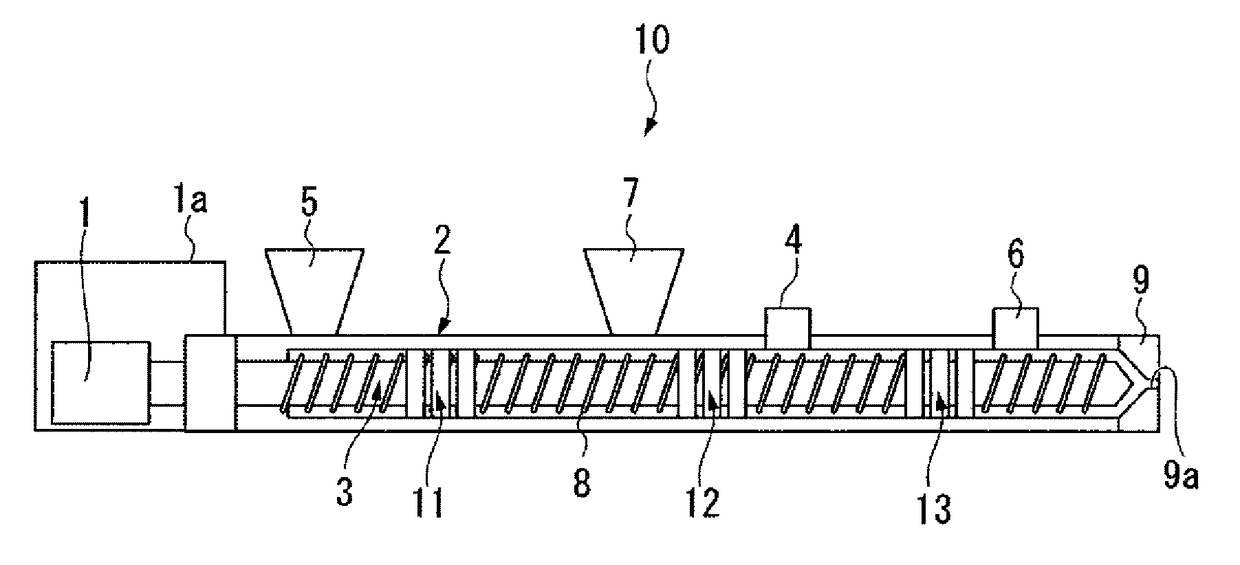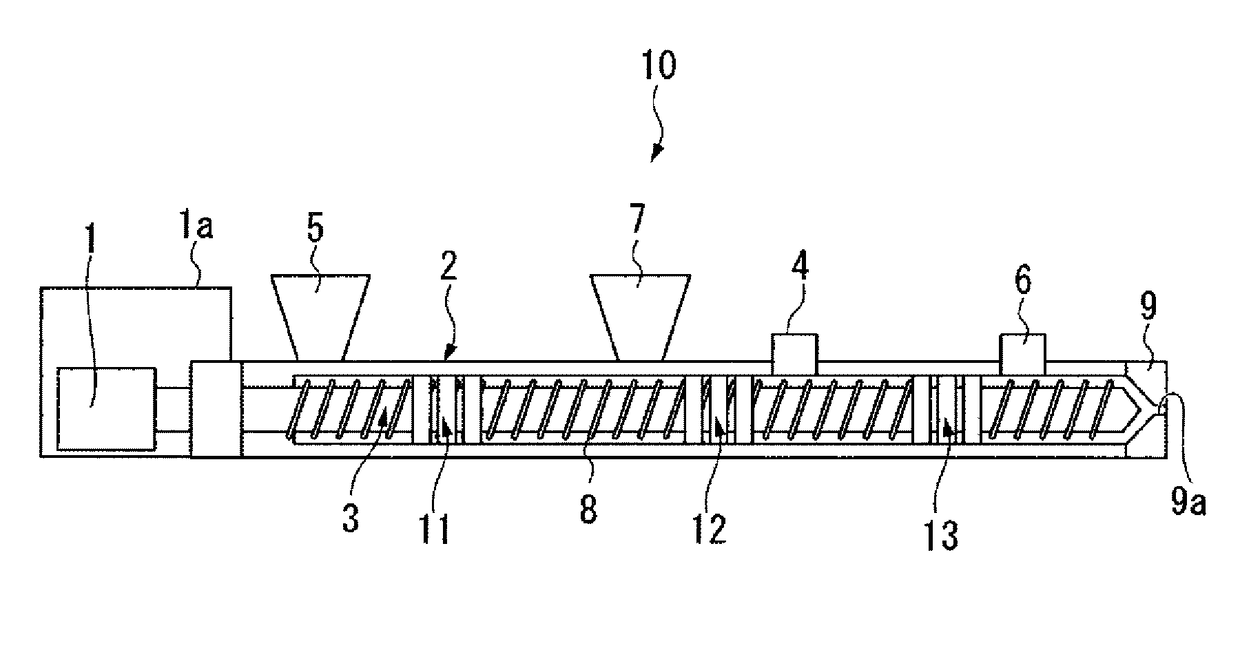Liquid crystal polyester composition, method for producing liquid crystal polyester composition, and molded article
a technology of liquid crystal polyester and composition, which is applied in the direction of liquid crystal compositions, other domestic articles, chemistry apparatus and processes, etc., can solve the problems of deterioration of flow balance and reduced fluidity of resin composition, and achieve good flow balance, retain or improve the strength of the obtained molded article, the effect of improving the strength of the molded articl
- Summary
- Abstract
- Description
- Claims
- Application Information
AI Technical Summary
Benefits of technology
Problems solved by technology
Method used
Image
Examples
reference example 1
Production of Liquid Crystal Polyester (1)
[0126]Into a reaction vessel equipped with a stirrer, a torque meter, a nitrogen gas introduction pipe, a thermometer and a reflux condenser, charged were 994.5 g (7.2 mol) of p-hydroxybenzoic acid, 239.2 g (1.44 mol) of terephthalic acid, 159.5 g (0.96 mol) of isophthalic acid, 446.9 g (2.4 mol) of 4,4′-dihydroxybiphenyl and 1347.6 g (13.2 mol) of acetic anhydride. Then a gas in the reaction vessel was replaced with a nitrogen gas, 0.18 g of 1-methylimidazole was then added, and the mixture was heated from room temperature to 150° C. for 30 minutes under a nitrogen gas stream with stirring, and refluxed at 150° C. for 30 minutes.
[0127]Then, 2.4 g of 1-methylimidazole was added, the mixture was heated from 150° C. to 320° C. over 2 hours and 50 minutes while byproduct acetic acid and unreacted acetic anhydride were distilled away, and at the time when an increase in torque was observed, contents were taken out from the reaction vessel, and c...
reference example 2
Production of Liquid Crystal Polyester (2)
[0129]A powdered liquid crystal polyester (2) was obtained in the same manner as in Reference Example 1 except that the amount of terephthalic acid used was 299.0 g (1.8 mol), the amount of isophthalic acid used was 99.7 g (0.6 mol), and as conditions for solid phase polymerization after crushing, the crushed product was heated under a nitrogen gas atmosphere from room temperature to 250° C. over 1 hour, heated from 250° C. to 295° C. over 5 hours, and held at 295° C. for 3 hours. The flow starting temperature of the liquid crystal polyester (2) was 327° C.
reference example 3
Production of Liquid Crystal Polyester (3)
[0130]Into a reaction vessel as the same as that in Reference Example 1, charded were 1034.99 g (5.5 mol) of 2-hydroxy-6-naphthoic acid, 272.52 g (2.475 mol) of hydroquinone, 378.33 g (1.75 mol) of 2,6-naphthalenedicarboxylic acid, 83.07 g (0.5 mol) of terephthalic acid and 1226.87 g (11.9 mol) of acetic anhydride, a gas in the reaction vessel was replaced with a nitrogen gas, 0.17 g of 1-methylimidazole was then added, and the mixture was heated under a nitrogen gas stream with stirring. At the time when the internal temperature reached 145° C., the mixture was stirred for 1 hour while being kept at this temperature.
[0131]Next, the mixture was heated from 145° C. to 310° C. over 3 hours and 30 minutes while distilled byproduct acetic acid and unreacted acetic anhydride were distilled away. The mixture was kept at this temperature for 3 hours to obtain a liquid crystal polyester. The obtained liquid crystal polyester was cooled to room tempe...
PUM
 Login to View More
Login to View More Abstract
Description
Claims
Application Information
 Login to View More
Login to View More - R&D
- Intellectual Property
- Life Sciences
- Materials
- Tech Scout
- Unparalleled Data Quality
- Higher Quality Content
- 60% Fewer Hallucinations
Browse by: Latest US Patents, China's latest patents, Technical Efficacy Thesaurus, Application Domain, Technology Topic, Popular Technical Reports.
© 2025 PatSnap. All rights reserved.Legal|Privacy policy|Modern Slavery Act Transparency Statement|Sitemap|About US| Contact US: help@patsnap.com


